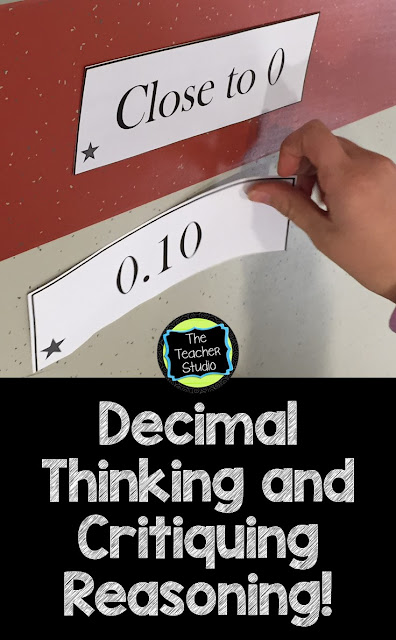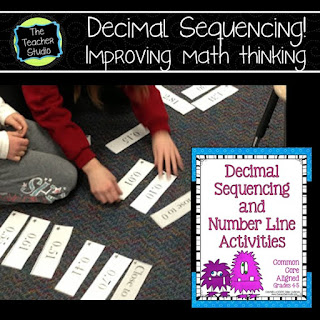“A well-crafted argument/critique requires a thoughtful and logical progression of mathematically sound statements and supporting evidence.”
Pretty powerful words when you think about it, right? Let’s look at a few of the phrases:
well-crafted
thoughtful and logical
mathematically sound
supporting evidence
Pretty sophisticated stuff for fourth graders, right?
Not so fast. Consider this simple activity. We are deep into our studies of decimals through the hundredth place, and I really wanted to see if my students had fully grasped some of the misconceptions that we had been seeing in recent days–for example, that 5.4 and 5.40 have two different values. I put my students into groups of three and handed each group a small collection of decimal cards. I asked them to practice reading the decimals aloud (checking to make sure everyone in the team was confident with this) and then asked them to have a discussion about what whole number each was closest to. I reminded them to use clear math language–and as I circulated, I listened for words like “tenths”, “hundredths”, and to hear if students were using what they know about halfway points between whole numbers. Overall, things seemed pretty stellar!
I decided to push things a little bit farther by showing them these “category cards”–but instead of just using the “Close to 0”, “Close to 1”, and other whole number cards, I added in cards like “Close to 1 1/2”, “Close to 2 1/2”, and so on. I asked the students to continue their discussion with their decimal cards by deciding if their decimals were ACTUALLY closer to those halfway points. Now things got a little interesting!
After my students were convinced they had things right–I took them down the hall where I placed all the category headings in order and had the students place their decimals in the correct category. I started down at the low end and called for all decimals close to 0…then all those close to 1/2…and so on.
When all the cards were placed, we worked to sequence the decimals in each category–and had some great discussions about place value and how we KNOW what order is correct.
As the process unfolded, we found some decimals that we couldn’t get agree on. Time to critique reasoning! At this point, I really stressed the point that in order to truly “critique”, students needed to have a clear point, use correct and mathematically sound language, and be able to give examples and evidence that would make their point clear to other students.
This became particularly true when we tried to place this one! Where should 1.25 go–is it closer to 1 or closer to 1 1/2? The debate raged–we had “Team Rounding” who was convinced that because the “5” made it “round up”, that this card should be placed closer to the 1.5. The other team felt this wasn’t meant to be rounded–and that the number should go exactly halfway between the two.
By the time the debate was over, people were satisfied (most anyway!), that this arrangement worked–and that unless we are TOLD to round, we have to follow the directions clearly. And, in this case, they were told to put the cards in the category that the numbers were closest to–and for a few numbers they could NOT be placed in any one category but had to fit between them. Not bad for a 25 minute math warm up, right?
These cards are a part of my Decimal Sequencing Activities.







